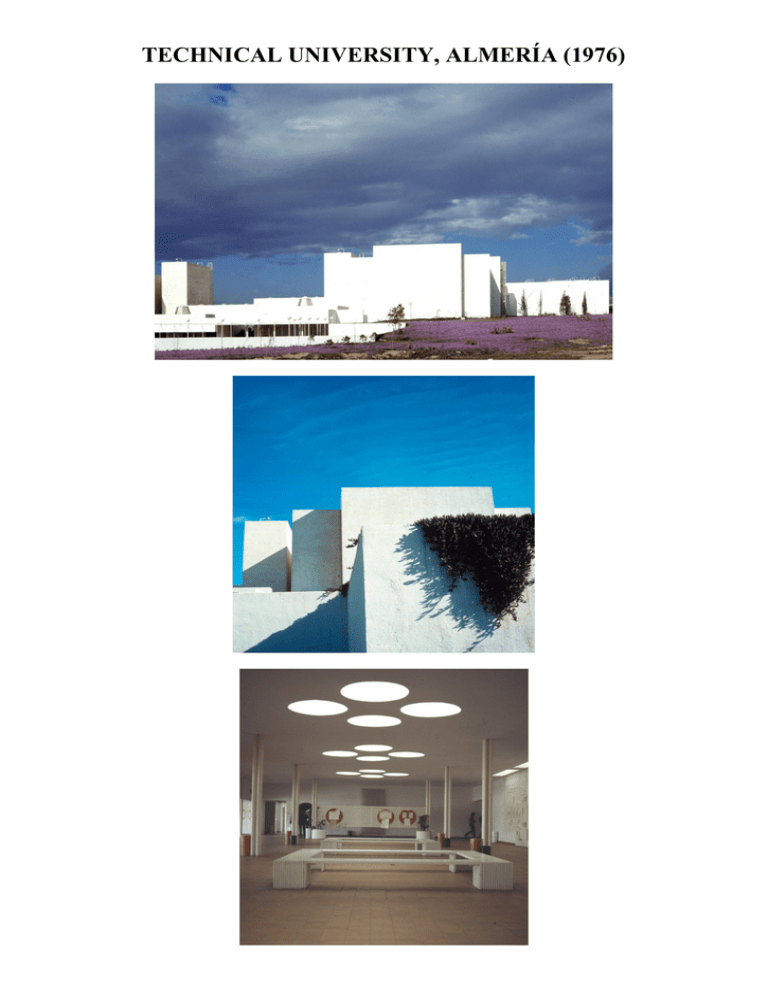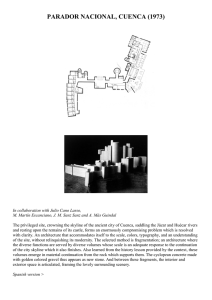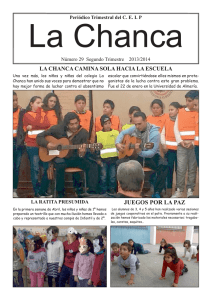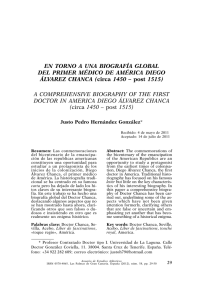Technical University Almeria
Anuncio

TECHNICAL UNIVERSITY, ALMERÍA (1976) In collaboration with Julio Cano Lasso, M. Martín Escanciano and A. Más Guindal. The site, on an esplanade near the sea, yet lacking direct views of it, together with the climate of Almería, suggested a “kashba” solution ordered by a rational scheme. A system of streets leading to a central square was established in order to organize the complex educational program. This network of corridors links classrooms, laboratories, and offices with diverse courtyards, which in turn provide illumination and ventilation. The honeycombed organism thus formed is both highly effective and typologically proven in this climate (the Chanca quarter in Almeria). In some spaces the light sources are marked by deep skylights which appearing on the roof create a distinctive image. It was always thought that the courtyards, with the climate thus controlled, would become fertile gardens full of autochthonous species. The growth of the bougainvillaeas, jasmine and grapevines makes possible the continuity of interior and exterior in the experience of the building. From the exterior the organism appears closed, defensive against outside agents. The construction is enormously simple, with an orthogonal grid of 4 x 4 meters, a clearly rational scheme allowing for unlimited growth. Spanish version > En colaboración con Julio Cano Lasso, M. Martín Escanciano and A. Más Guindal. La situación, en una explanada junto al mar pero sin vistas sobre él, sugería, con el clima de Almería, una solución de “kashba” ordenada por un esquema racional. Para organizar un complejo programa docente se establece un sistema de calles que desembocan en una plaza central. Esta red de pasillos va engarzando aulas, laboratorios y despachos con diversos patios, a través de los que se iluminan y ventilan, creando un organismo alveolado altamente eficaz y tipológicamente comprobado en ese clima (el barrio de la Chanca de Almería). En algunos espacios se acentuan los puntos de luz con lucernarios profundos que, apareciendo en cubierta, ofrecen una singular imagen. Se pensó siempre que los patios, con el clima así controlado, se convertirían en feraces jardines de especies autóctonas. Las vindonias, buganvillias, jazmines y parras debían crecer allí, haciendo posible la continuidad interior-exterior en la vida del edificio. Al exterior el organismo aparece como cerrado, defendiéndose de los agentes externos. La construcción es de enorme sencillez, con una trama ortogonal de 4 x 4 m, sobre un esquema claramente racional que permite un crecimiento ilimitado.


